The small neighborhood of Los Feliz is snuggled in an area just south of Griffith Park, adjacent to Hollywood and Silver Lake. Its borders are Hollywood Blvd. to the south, Griffith Park to the north, the L.A. River to the east, and Western Avenue to the west. Originally known as Rancho Los Feliz, it had a series of owners after the Feliz family. One owner, Griffith J. Griffith, donated over half of the ranch to the city of Los Angeles. This ranch, five times the size of Central Park in NY, is now one of the largest city-owned parks in the country, Griffith Park. Later other portions of the ranch became the areas known as Silver Lake and Los Feliz.
Los Feliz is a relaxed hillside community. In the local Village you can find several coffee shops, restaurants, small clothing, and vintage stores. There is a vintage movie theater, a few bars, and an amazing bookshop. Also, near to numerous bars, restaurants and the indulgences of the local nightlife. The neighborhood borders the expansive Griffith Park, making it perfect for hiking, concerts at the Greek Theatre or dreaming the night away at the Griffith Observatory. Los Feliz is also home to some world-famous designs by architects like R.M Schindler, Richard Neutra, John Lautner, Raphael Soriano, and Frank Lloyd Wright with his Ennis and Hollyhock Houses.
In a city where life moves by in a flash, Los Feliz is known as an affluent Los Angeles Village, where the lifestyle is a little simpler and slower. As its name suggests it is where the “happy ones” live. These residents enjoy a lifestyle that provides for every need within a few minutes. Most of the homes are rich in character, built in the 1920’s and 30’s and are mainly Spanish style and classic California bungalows with period revival inspirations.
Franklin Hills
The charming entrance into the hills is via Franklin Street, crossing the iconic Shakespeare Bridge. Built in 1926 and named in honor of the playwright William Shakespeare, this concrete, gothic style bridge was designated an L.A. Historic Cultural Monument. Franklin Hills lies in the hilly area east of the village flats, south of Los Feliz Boulevard. The winding streets provide panoramic views with homes designed by many preeminent architects of the 20th century. Home to the Franklin Hills Public Stairway system, dating back to the 1920’s. Featuring 14 stairways, originally built for access to trolley lines, that now provide exercise and community fun.
The Oaks and Hollywood Grove
With revival style architecture dating back to the 1920’s, The Oaks is another popular area in Los Feliz. A community of beautiful homes that embrace a very unique charm and character. The neighborhood is bordered by Foothill Drive on the south, Griffith Park to the north, Canyon Drive on the west, and Fern Dell Drive to the east. Known by the winding streets named after various types of oak trees. Many of the homes offer great views, while others are slipped brilliantly into peaceful hideaways from the city.
Between Franklin Ave and The Oaks is a small area called Hollywood Grove, the only area in Los Feliz registered as a Historical Preservation Overlay Zone (HPOZ). 139 of the most significant Craftsman Colonial and Mediterranean style homes from the early 1900’s.
Laughlin Park
One of LA’s top five neighborhoods according to Los Angeles Magazine. Created in 1905 by builder and magnate Homer Laughlin. Secluded, luxurious, and serene, the private, gated community of Laughlin Park is bordered by Los Feliz Boulevard, Cummings Drive, Franklin Avenue and Hobart Boulevard.
The homes in the rather small area of Laughlin Park area both architecturally and historically significant, however, this unique community, unlike many others, does not maintain any architectural theme. Designs by notable architects such as Gordon Kaufman, Julia Morgan, Roland Coate, and Lloyd Wright. Styles including Craftsman, Spanish, Italian, Mediterranean, French, English Gothic, Traditional, and Moderne. Well-known past residents, who were attracted to the area by its charm include Cecil B. DeMille, W.C Fields, and Basil Rathbone. Today its appeal remains the same and the areas attracts similarly famous figures.
Los Feliz Estates
This terraced hillside layout provides flat yards for swimming pools, with mainly one-story homes, and lovely city views. Unique to the hills, homes are situated on one side of the street only. This is a community with a homeowner association and dues to maintain the security and integrity of this beautiful community.

LOS FELIZ ENGLISH TUDOR BY WINCHTON L RISLEY FAIA
Winchton L. Risley FAIA – 1927. Nestled among a curated landscaped wonderland lies a very special English Tudor Revival home. Perched above the street behind a gate, the property unfolds into a majestic garden setting meticulously manicured and cared for by its current owner. Rows of several varieties of rose bushes surround the property (some of which date back 100 years).
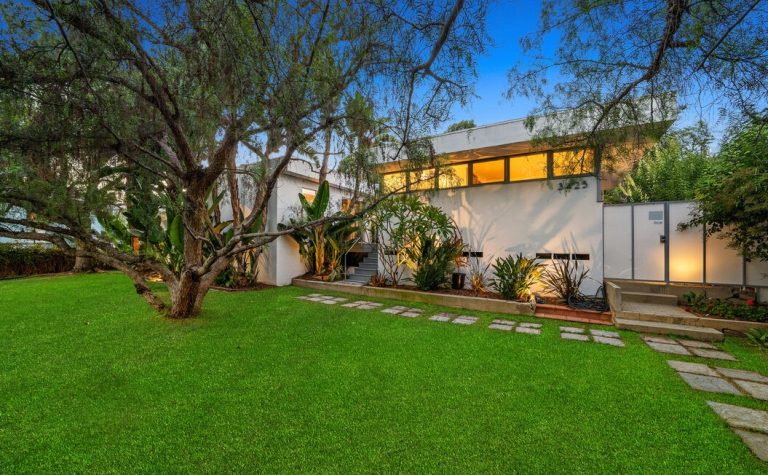
LOS FELIZ RAPHAEL SORIANO THE LUKENS HOME
We have a special place in our hearts for the architect Raphael Soriano. Having recently sold the Gogol house in Los Feliz, we’re excited that another gem has hit the market. The Lukens Home in Jefferson Park. This International Style home evokes the machine age minimal aesthetic popularized by the Bauhaus movement. This home should soon have another owner to appreciate its everlasting design.

LOS FELIZ HISTORIC DREAM HOUSE
On the checklist for the dream house in Los Feliz: a city of garden gnomes – check, multiple peacocks – check, sasquatch – check, a gorgeous French Normandy house with some original features and exquisite updates – check. And the meticulously manicured landscaping is breathtaking.

LOS FELIZ PRIVATE AND GATED SPANISH COLONIAL ESTATE
Los Feliz Private and Gated Spanish Colonial Estate, tucked into a cul-de-sac and sits on a sprawling 3/4-acre lot. Comprised of three parcels with a massive flat lawn. The grounds include a meditation sanctuary with koi pond. A large, terraced hillside with an orchard of fruit trees, wildflowers, and seating areas.

RESTORED AND RENOVATED CLASSIC SPANISH VILLA COMPOUND | LOS FELIZ
One of Los Feliz most coveted legacy estate properties with breathtaking city to coast views. Former home of Hollywood legend and AMPAS founder Frank Lloyd.
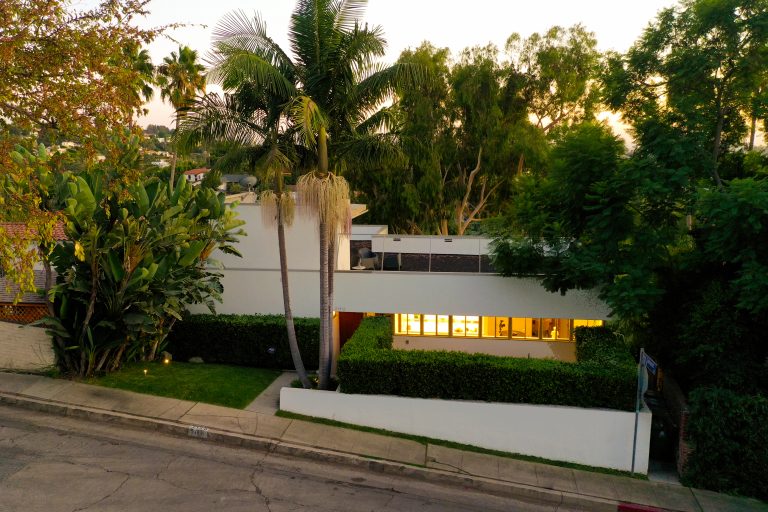
LOS FELIZ, THE GOGOL HOUSE 1939 – RAPHAEL SORIANO MODERN HOME
Los Feliz Raphael Soriano Gogol House. Soriano was a colleague of both Richard Neutra and Rudolph Schindler. The Gogol House is a fine example of International, Bauhaus Style of architecture, and one of only 12 buildings that remain from this master.

LOS FELIZ 1920S FULLY RESTORED, DESIGN GEM
Turn-key living, exquisitely curated by Studio JB Design, in this magical Los Feliz Residence. This home has been featured in ANGELENO and BELLE Magazine.
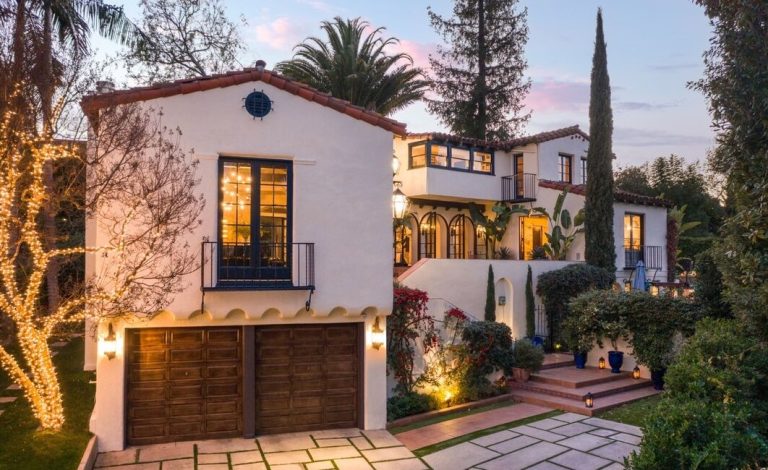
LOS FELIZ, A RARE AND CLASSIC HOLLYWOOD COLLECTOR’S PIECE
This classic 1927 Spanish Colonial Revival is designed by Legendary architect Paul Williams. Gated, and ideally located on a private cul-de-sac backing up to Laughlin Park.

LOS FELIZ SPANISH-STYLE ANDALUSIAN HACIENDA
Extraordinary 1928 Spanish-style Hacienda. Remodeled and furnished by renowned Hollywood fashion designer, Sue Wong. “VILLA FELIZ” brings to life, true Hollywood Glamour.

LOS FELIZ MODERN POOL HOME REIMAGINED BY HOLLY HUNT & DOUGLAS LEVINE
Welcome to an elegant re-imagining of a classic California 1948 traditional home into an updated Los Feliz modern pool home.
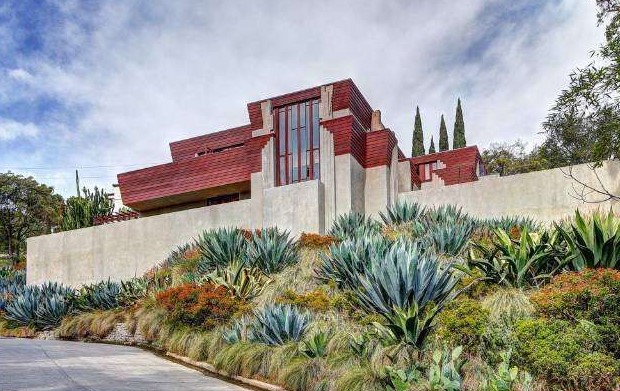
LOS FELIZ LLOYD WRIGHT HOUSE | TAGGART RESIDENCE
Los Feliz Lloyd Wright house built in 1922, the Taggart House. Los Angeles Historic-Cultural Monument #521. This was the first significant Modernist home built by architect Lloyd Wright.
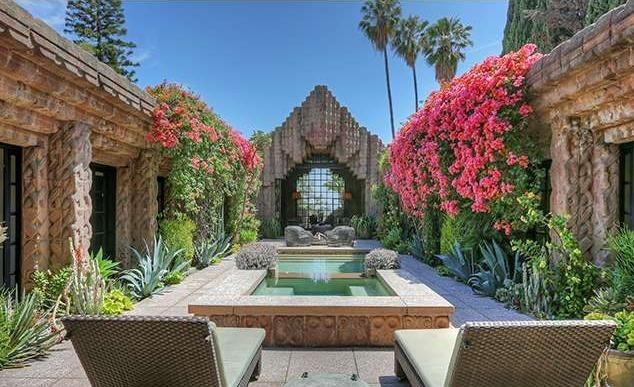
THE JOHN SOWDEN HOUSE BY LLOYD WRIGHT IN LOS FELIZ
The John Sowden House, also known as the “Jaws House” or the “Franklin House”, was built in 1926 in Los Feliz. The original owner, John Sowden, was a painter and photographer who hired his friend, Lloyd Wright, eldest son of Frank Lloyd Wright, to build his luxurious home in Los Feliz.
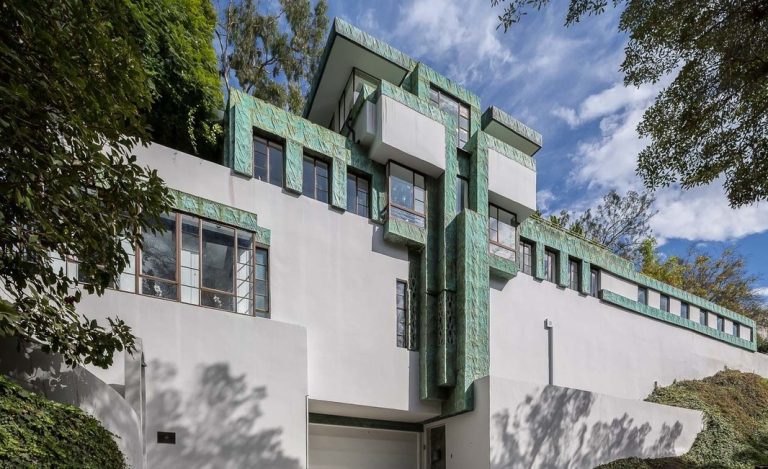
LOS FELIZ LLOYD WRIGHT HOUSE THE SAMUEL NOVARRO RESIDENCE
Los Feliz Lloyd Wright house, the Mayan inspired Samuel Novarro Residence has been meticulously renovated. Located in the exclusive neighborhood “The Oaks” in Los Feliz, this home is part of the Historic-Cultural Monument #130.
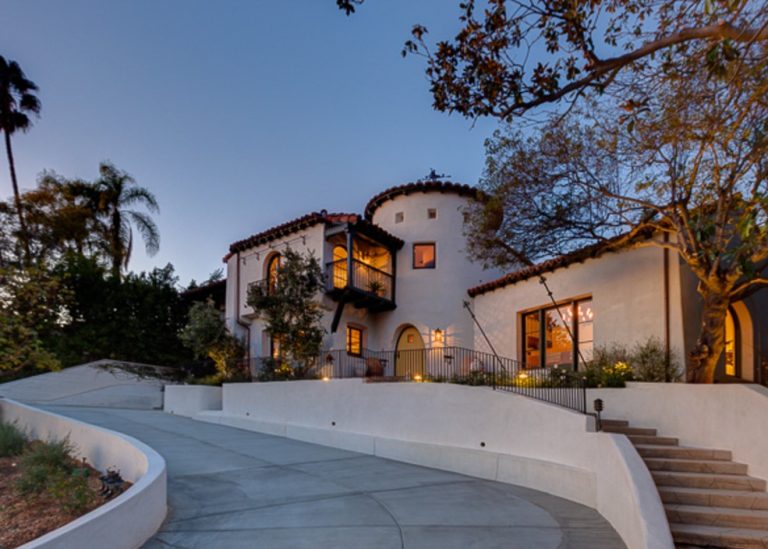
LOS FELIZ WALLACE NEFF THE A.L. SCHOENBORN RESIDENCE
Recognized and renowned Los Feliz Wallace Neff home, the A.L. Schoenborn Residence has been authentically and meticulously restored, embodying Neff’s early and classic Spanish colonial architecture mirroring the heritage of early Southern California.

LOS FELIZ COVETED 1930 OAKS SPANISH COLONIAL CELEBRITY COMPOUND
Identified as one of the most coveted properties in the Los Feliz Oaks, this circa 1930 Los Feliz Oaks Spanish Colonial celebrity compound has been taken down to the studs and methodically restored and modernized, all while retaining the soul of a vintage sunny old-world manor.

LOS FELIZ BEAUTIFUL AND BRIGHT SPANISH POOL HOME, PRIVATE & GATED
As seen in Variety, this Los Feliz Spanish Pool home is walled, hedged and gated providing the ultimate in privacy and safekeeping. Enter through an antique wooden gate into a serene garden. Arched doorways and soaring ceilings
can be found in the formal living room with stunning Palladian windows, detailed ironwork and
attractive tiled mantel fireplace.

LOS FELIZ 1929 HISTORIC ESTATE – SPANISH COLONIAL HOME
Witmer and Watson Architectural, 1929 Los Feliz Spanish Colonial home north of the boulevard, in historic area. The property is quietly secluded on walled and gated grounds. The home has been restored and updated keeping authentic details and instilling modern luxury.

LOS FELIZ SPANISH COLONIAL REVIVAL HOME
This luxuriously reimagined Los Feliz Spanish Colonial Revival home provides a picturesque escape within its own private sanctuary amidst lush greenery and repose.

LOS FELIZ RUDOLPH SCHINDLER HOUSE – THE SCHLESSINGER RESIDENCE
Los Feliz Rudolph Schindler, The Schlessinger Residence, 1952-54. Conceived in 1952 for an elevated corner lot overlooking the Shakespeare Bridge, coincidentally, within view of the architect’s first work in Los Angeles – the completion of the Hollyhock House at Barnsdall Park.
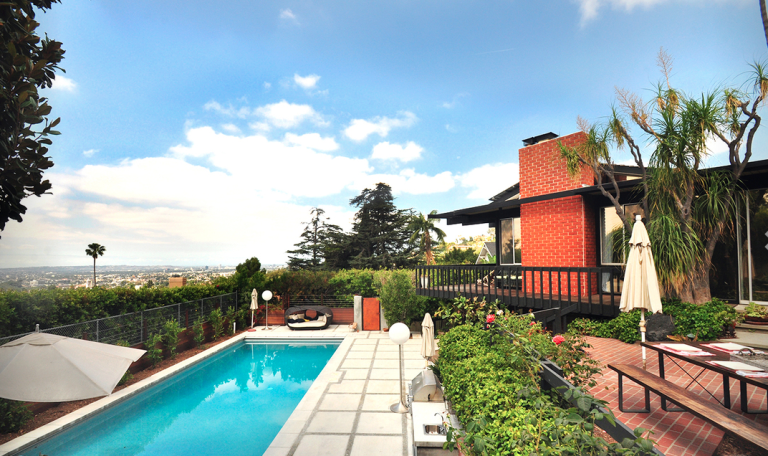
LOS FELIZ EDWARD FICKETT HOUSE THE JACOBSON RESIDENCE
This Los Feliz Edward Fickett home is Los Angeles Historical Cultural Monument 674. The first contemporary structure to receive Landmark Status by the City of Los Angeles. Private, intact original Post and Beam masterpiece.
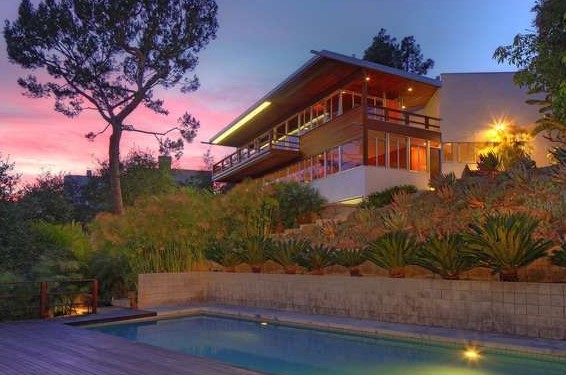
LOS FELIZ RICHARD NEUTRA | THE WIRIN HOUSE
Los Feliz Richard Neutra house, the Wirin Residence, 1949. Recognized as one of Neutra’s finer commissions, The Wirin House is a beacon to mid-century architecture.
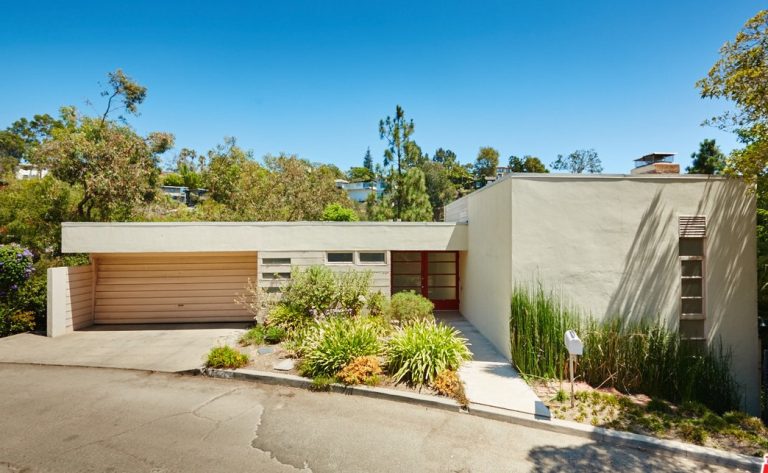
THE ANSALEM A. ERNST HOUSE BY GREGORY AIN IN LOS FELIZ
Los Angeles Historic-Cultural Monument No. 840. Available for the first time in over twenty years, The Ansalem Ernst House by Gregory Ain circa 1937 is perfectly nestled in the coveted Los Feliz Oaks.
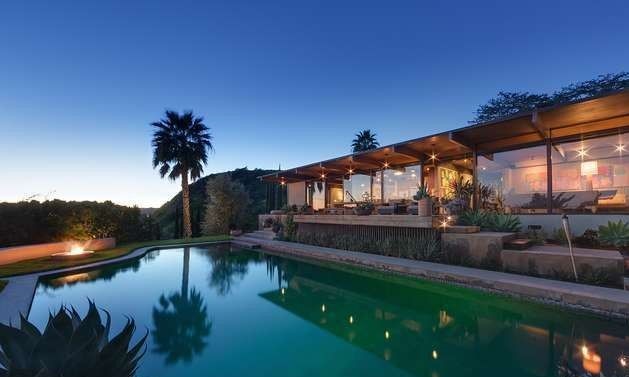
THE WONG RESIDENCE BY ARCHITECTS BUFF & HENSMAN, 1969
The Wong Residence by Buff and Hensman is an Impressive and highly significant modernist home on one of the most sought after streets of Los Feliz. The Wong Residence, 1969, by legendary architects Buff and Hensman. With a distinguished celebrity provenance, this is a shining star that has been fully updated with no expense spared.

ARCHITECTURAL LOS FELIZ VIEW HOME BY STEVEN HILL
Pristine, modern, timeless, and intelligent Steven Hill architectural view home in Los Feliz.

LOS FELIZ MID CENTURY MODERN VIEW HOME BY ARCHITECT RAY V. OTERO
Los Feliz Mid Century Modern View home by Architect Ray V. Otero. Mr. Otero has built some of the classic modern houses seen around Los Feliz and Silver Lake.
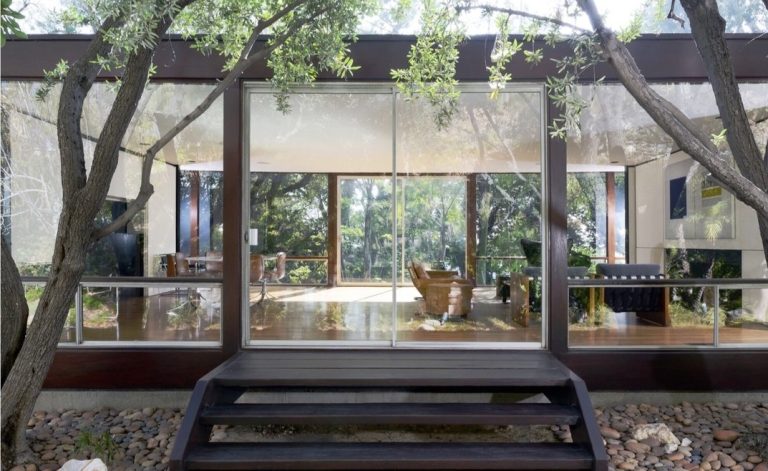
THE MOORE HOUSE, 1964 BY NOTED MID CENTURY MODERN ARCHITECT CRAIG ELLWOOD
The Moore House, 1964, by iconic Mid Century Modern architect Craig Ellwood. This world-class design employs the cleanest of modern architecture with remarkable city and ocean views.
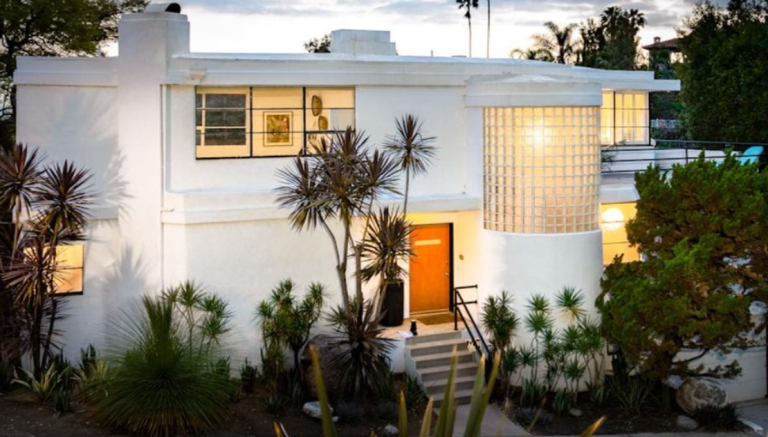
LOS FELIZ STREAMLINE MODERNE, THE ULM HOUSE BY CELEBRATED ARCHITECT WILLIAM KESLING
Presenting the Ulm house, one of the Los Feliz Streamline Moderne built by celebrated 1930’s architect William Kesling. This iconic home brings in soaring city light views reaching out to the Pacific Ocean. Every detail exhibits true modern art-deco architecture and design of the 1930s.

LOS FELIZ MID CENTURY MODERN ARCHITECTURAL HOME RENOVATED BY LINDA TAALMAN, AIA
Paradise in the Los Feliz hills. Welcome to 2000 Mayview, a characteristic Los Feliz Mid Century Modern architectural retreat on an oversized lot, renovated by celebrity architect Linda Taalman, AIA.
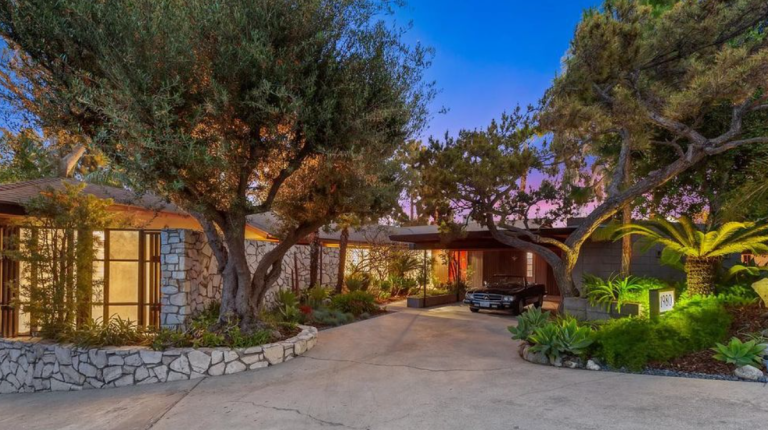
STUNNING LOS FELIZ MID CENTURY HOUSE WITH REMARKABLE VIEWS
Wraparound decks, giant windows, and stunning views of Downtown Los Angeles, the famed Hollywood sign, wooded canyons, and Griffith Observatory, make this Los Feliz Mid Century house a true jewel.
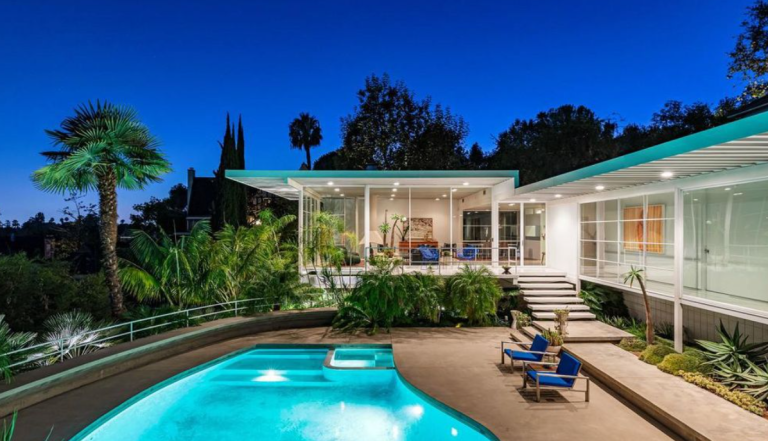
LOS FELIZ MID CENTURY MODERN HOME – THE STEEL HOUSE BY ARCHITECT NEIL A. JOHNSON, AIA
The Steel House, Neil A. Johnson, AIA. An unrivaled architectural achievement perched on a knoll north of the Boulevard in a leading neighborhood on Los Feliz. Inspired by the mid-20th century Case Study program, this 1960 masterpiece has been thoroughly revived under the guidance of noted architectural restoration expert Mark Haddawy.

LOS FELIZ CLASSIC ARCHITECTURAL HOME WITH POOL
The Hiram Kwan Residence. This stunning Los Feliz architectural home was designed by modernist James Stevens, a protégé of John Lautner. The masterpiece’s renovations and unparalleled expansions were later designed by David Levitt, AIA. The lush landscaped mastery was designed by Jerry Hritz.







